Preface
What this book covers
What you need for this book
Who this book is for
Sections
Getting ready
How to do it…
How it works…
There's more…
See also
Conventions
Reader feedback
Customer support
Downloading the example code
Errata
Piracy
Questions
TensorFlow - An Introduction
Introduction
Installing TensorFlow
Getting ready
How to do it...
How it works...
There's more...
Hello world in TensorFlow
How to do it...
How it works...
Understanding the TensorFlow program structure
How to do it...
How it works...
There's more...
Working with constants, variables, and placeholders
How to do it...
How it works...
There's more...
Performing matrix manipulations using TensorFlow
How to do it...
How it works...
There's more...
Using a data flow graph
How to do it...
Migrating from 0.x to 1.x
How to do it...
There's more...
Using XLA to enhance computational performance
Getting ready
How to do it...
Invoking CPU/GPU devices
How to do it...
How it works...
TensorFlow for Deep Learning
How to do it...
There's more
Different Python packages required for DNN-based problems
How to do it...
See also
Regression
Introduction
Choosing loss functions
Getting ready
How to do it...
How it works...
There's more...
Optimizers in TensorFlow
Getting ready
How to do it...
There's more...
See also
Reading from CSV files and preprocessing data
Getting ready
How to do it…
There's more...
House price estimation-simple linear regression
Getting ready
How to do it...
How it works...
There's more...
House price estimation-multiple linear regression
How to do it...
How it works...
There's more...
Logistic regression on the MNIST dataset
How to do it...
How it works...
See also
Neural Networks - Perceptron
Introduction
Activation functions
Getting ready
How to do it...
How it works...
There's more...
See also
Single layer perceptron
Getting ready
How to do it...
There's more...
Calculating gradients of backpropagation algorithm
Getting ready
How to do it...
How it works...
There's more...
See also
MNIST classifier using MLP
Getting ready
How to do it...
How it works...
Function approximation using MLP-predicting Boston house prices
Getting ready
How to do it...
How it works...
There's more...
Tuning hyperparameters
How to do it...
There's more...
See also
Higher-level APIs-Keras
How to do it...
There's more...
See also
Convolutional Neural Networks
Introduction
Local receptive fields
Shared weights and bias
A mathematical example
ConvNets in TensorFlow
Pooling layers
Max pooling
Average pooling
ConvNets summary
Creating a ConvNet to classify handwritten MNIST numbers
Getting ready
How to do it...
How it works...
Creating a ConvNet to classify CIFAR-10
Getting ready
How to do it...
How it works...
There's more...
Transferring style with VGG19 for image repainting
Getting ready
How to do it...
How it works...
There's more...
Using a pretrained VGG16 net for transfer learning
Getting ready
How to do it...
How it works...
There's more...
Creating a DeepDream network
Getting ready
How to do it...
How it works...
There's more...
See also
Advanced Convolutional Neural Networks
Introduction
Creating a ConvNet for Sentiment Analysis
Getting ready
How to do it...
How it works...
There is more...
Inspecting what filters a VGG pre-built network has learned
Getting ready
How to do it...
How it works...
There is more...
Classifying images with VGGNet, ResNet, Inception, and Xception
VGG16 and VGG19
ResNet
Inception
Xception
Getting ready
How to do it...
How it works...
There is more...
Recycling pre-built Deep Learning models for extracting features
Getting ready
How to do it...
How it works...
Very deep InceptionV3 Net used for Transfer Learning
Getting ready
How to do it...
How it works...
There is more...
Generating music with dilated ConvNets, WaveNet, and NSynth
Getting ready
How to do it...
How it works...
There is more...
Answering questions about images (Visual Q&A)
How to do it...
How it works...
There is more...
Classifying videos with pre-trained nets in six different ways
How to do it...
How it works...
There is more...
Recurrent Neural Networks
Introduction
Vanishing and exploding gradients
Long Short Term Memory (LSTM)
Gated Recurrent Units (GRUs) and Peephole LSTM
Operating on sequences of vectors
Neural machine translation - training a seq2seq RNN
Getting ready
How to do it...
How it works...
Neural machine translation - inference on a seq2seq RNN
How to do it...
How it works...
All you need is attention - another example of a seq2seq RNN
How to do it...
How it works...
There's more...
Learning to write as Shakespeare with RNNs
How to do it...
How it works...
First iteration
After a few iterations
There's more...
Learning to predict future Bitcoin value with RNNs
How to do it...
How it works...
There's more...
Many-to-one and many-to-many RNN examples
How to do it...
How it works...
Unsupervised Learning
Introduction
Principal component analysis
Getting ready
How to do it...
How it works...
There's more...
See also
k-means clustering
Getting ready
How to do it...
How it works...
There's more...
See also
Self-organizing maps
Getting ready
How to do it...
How it works...
See also
Restricted Boltzmann Machine
Getting ready
How to do it...
How it works...
See also
Recommender system using RBM
Getting ready
How to do it...
There's more...
DBN for Emotion Detection
Getting ready
How to do it...
How it works...
There's more...
Autoencoders
Introduction
See Also
Vanilla autoencoders
Getting ready
How to do it...
How it works...
There's more...
Sparse autoencoder
Getting Ready...
How to do it...
How it works...
There's More...
See Also
Denoising autoencoder
Getting Ready
How to do it...
See Also
Convolutional autoencoders
Getting Ready...
How to do it...
How it Works...
There's More...
See Also
Stacked autoencoder
Getting Ready
How to do it...
How it works...
There's More...
See Also
Reinforcement Learning
Introduction
Learning OpenAI Gym
Getting ready
How to do it...
How it works...
There's more...
See also
Implementing neural network agent to play Pac-Man
Getting ready
How to do it...
Q learning to balance Cart-Pole
Getting ready
How to do it...
There's more...
See also
Game of Atari using Deep Q Networks
Getting ready
How to do it...
There's more...
See also
Policy gradients to play the game of Pong
Getting ready
How to do it...
How it works...
There's more...
AlphaGo Zero
See also
Mobile Computation
Introduction
TensorFlow, mobile, and the cloud
Installing TensorFlow mobile for macOS and Android
Getting ready
How to do it...
How it works...
There's more...
Playing with TensorFlow and Android examples
Getting ready
How to do it...
How it works...
Installing TensorFlow mobile for macOS and iPhone
Getting ready
How to do it...
How it works...
There's more...
Optimizing a TensorFlow graph for mobile devices
Getting ready
How to do it...
How it works...
Profiling a TensorFlow graph for mobile devices
Getting ready
How to do it...
How it works...
Transforming a TensorFlow graph for mobile devices
Getting ready
How to do it...
How it works...
Generative Models and CapsNet
Introduction
So what is a GAN?
Some cool GAN applications
Learning to forge MNIST images with simple GANs
Getting ready
How to do it...
How it works...
Learning to forge MNIST images with DCGANs
Getting ready
How to do it...
How it works...
Learning to forge Celebrity Faces and other datasets with DCGAN
Getting ready
How to do it...
How it works...
There's more...
Implementing Variational Autoencoders
Getting ready...
How to do it...
How it works...
There's More...
See also...
Learning to beat the previous MNIST state-of-the-art results with Capsule Networks
Getting ready
How to do it...
How it works...
There's more...
Distributed TensorFlow and Cloud Deep Learning
Introduction
Working with TensorFlow and GPUs
Getting ready
How to do it...
How it works...
Playing with Distributed TensorFlow: multiple GPUs and one CPU
Getting ready
How to do it...
How it works...
Playing with Distributed TensorFlow: multiple servers
Getting ready
How to do it...
How it works...
There is more...
Training a Distributed TensorFlow MNIST classifier
Getting ready
How to do it...
How it works...
Working with TensorFlow Serving and Docker
Getting ready
How to do it...
How it works...
There is more...
Running Distributed TensorFlow on Google Cloud (GCP) with Compute Engine
Getting ready
How to do it...
How it works...
There is more...
Running Distributed TensorFlow on Google CloudML
Getting ready
How to do it...
How it works...
There is more...
Running Distributed TensorFlow on Microsoft Azure
Getting ready
How to do it...
How it works...
There's more...
Running Distributed TensorFlow on Amazon AWS
Getting ready
How to do it...
How it works...
There is more...
Learning to Learn with AutoML (Meta-Learning)
Meta-learning with recurrent networks and with reinforcement learning
Meta-learning blocks
Meta-learning novel tasks
Siamese Network
Applications of Siamese Networks
A working example - MNIST
TensorFlow Processing Units
Components of TPUs
Advantages of TPUs
Accessing TPUs
Resources on TPUs

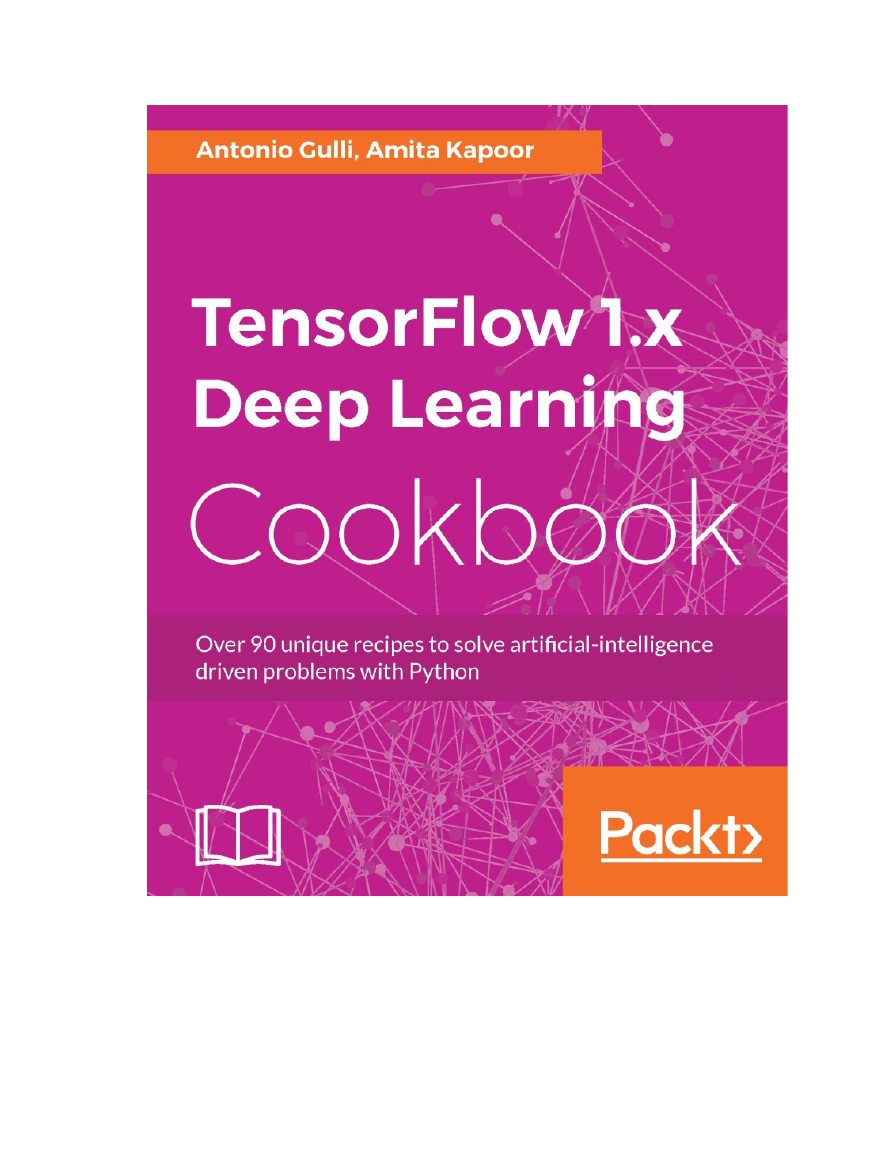
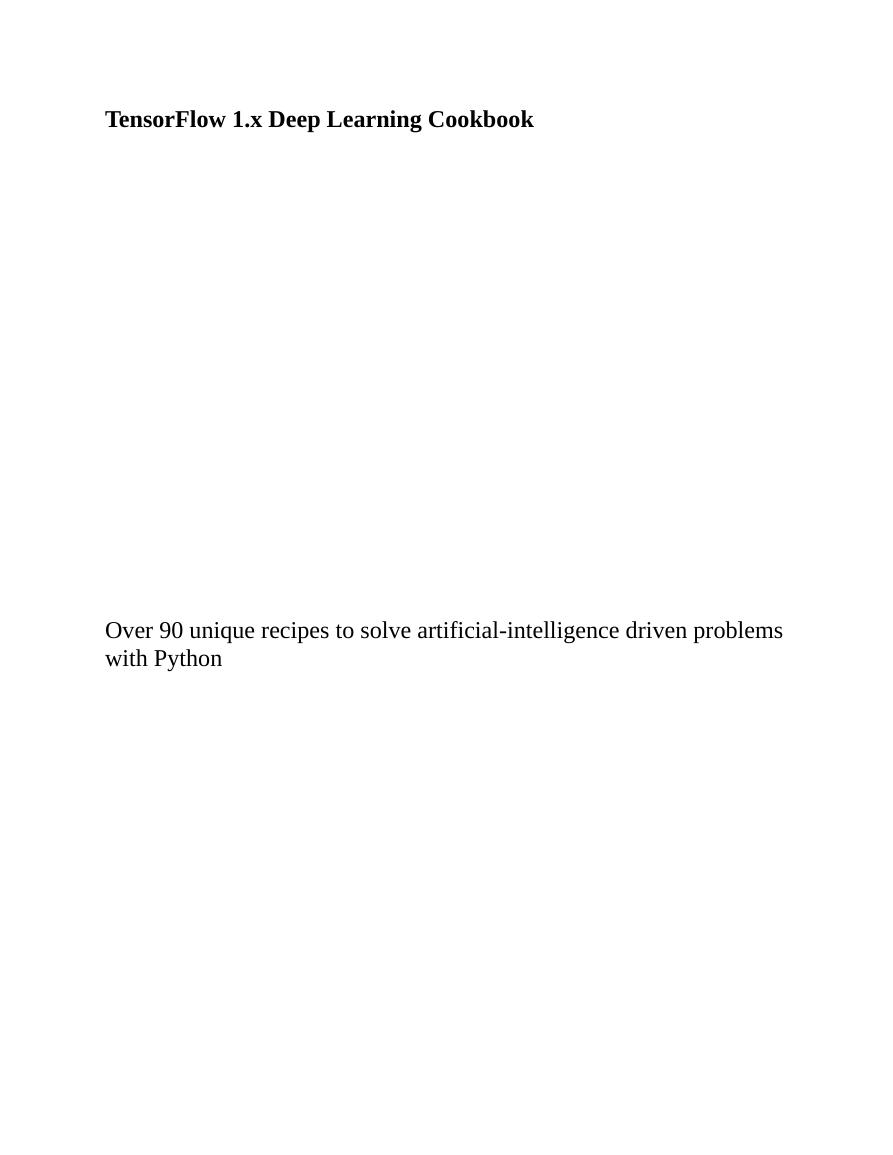
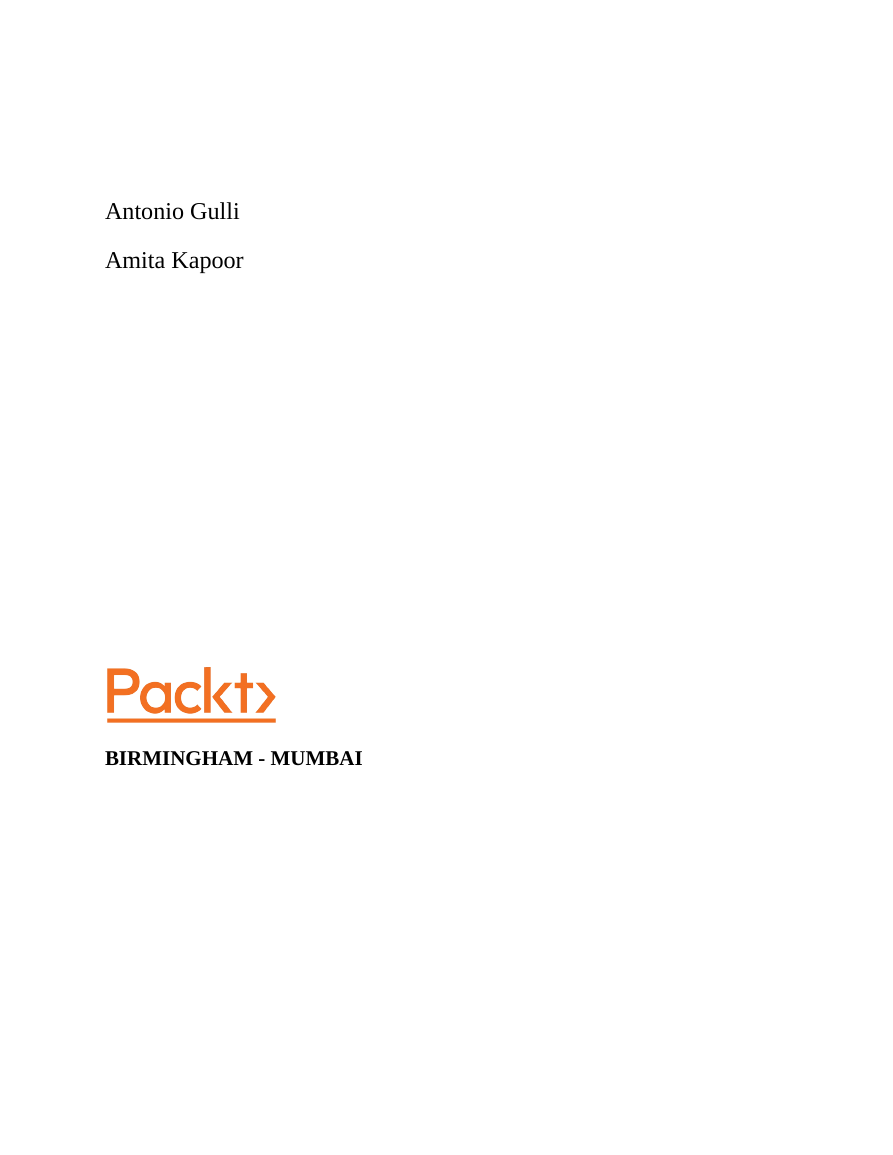
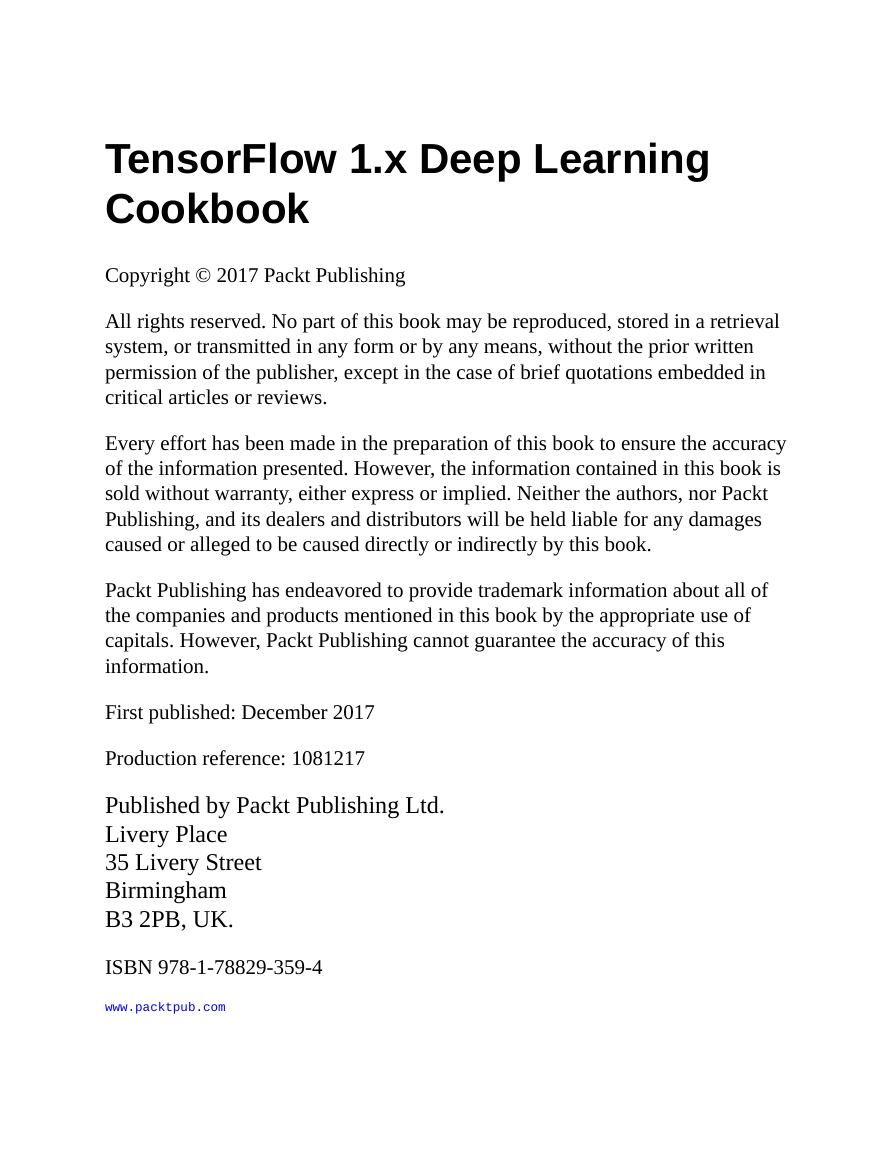
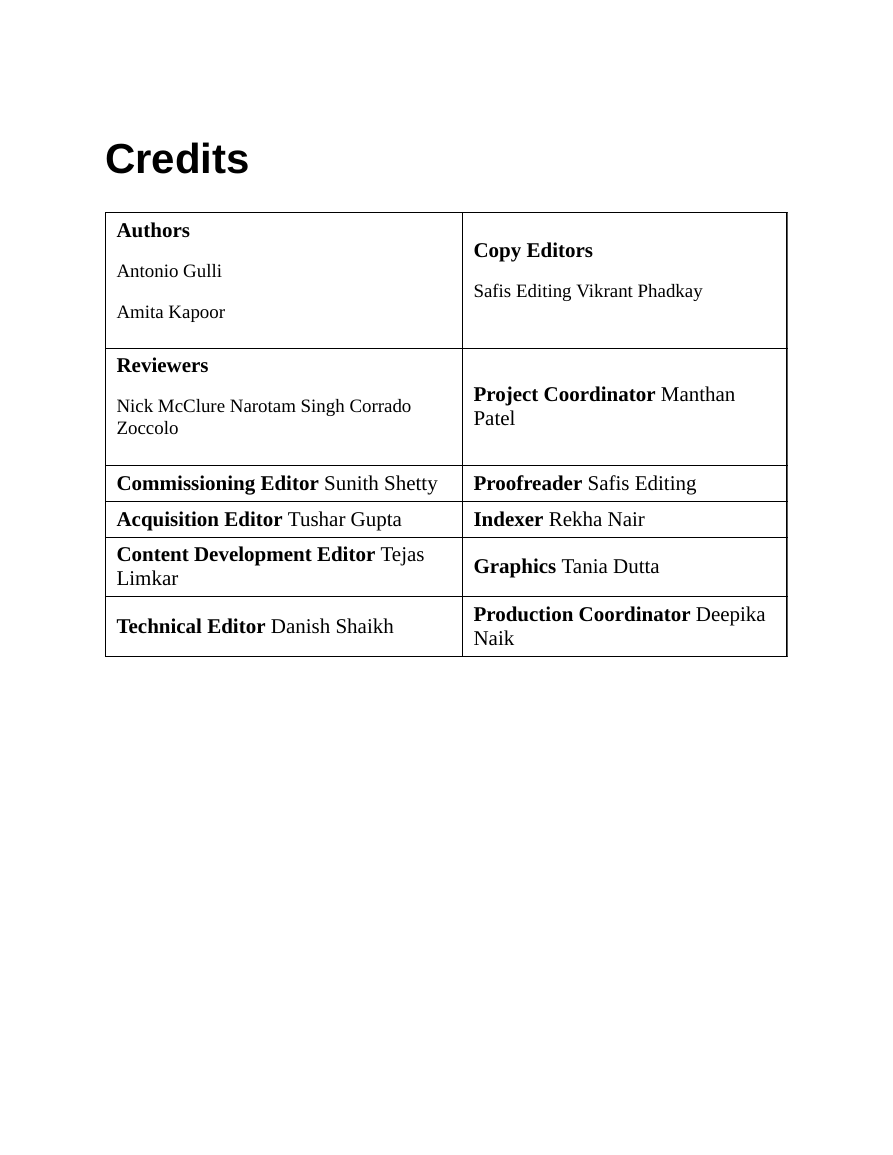
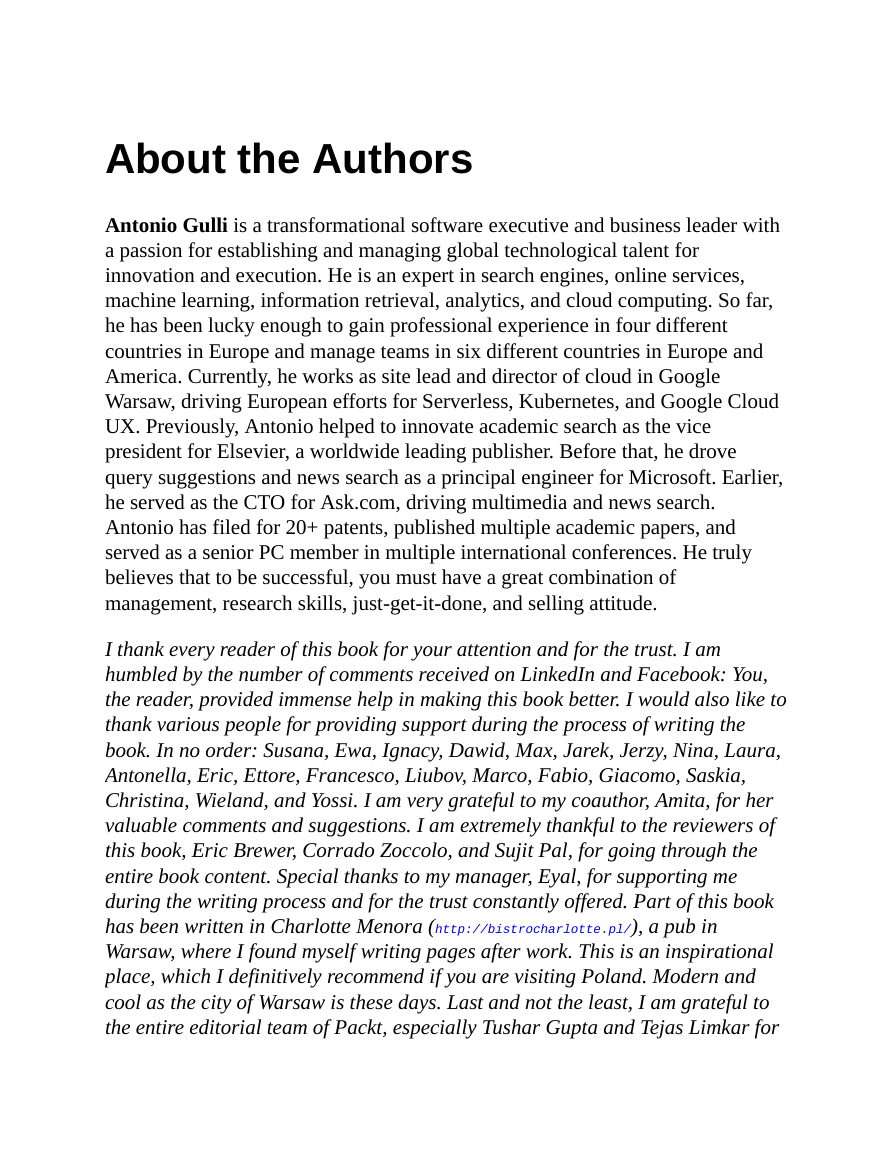
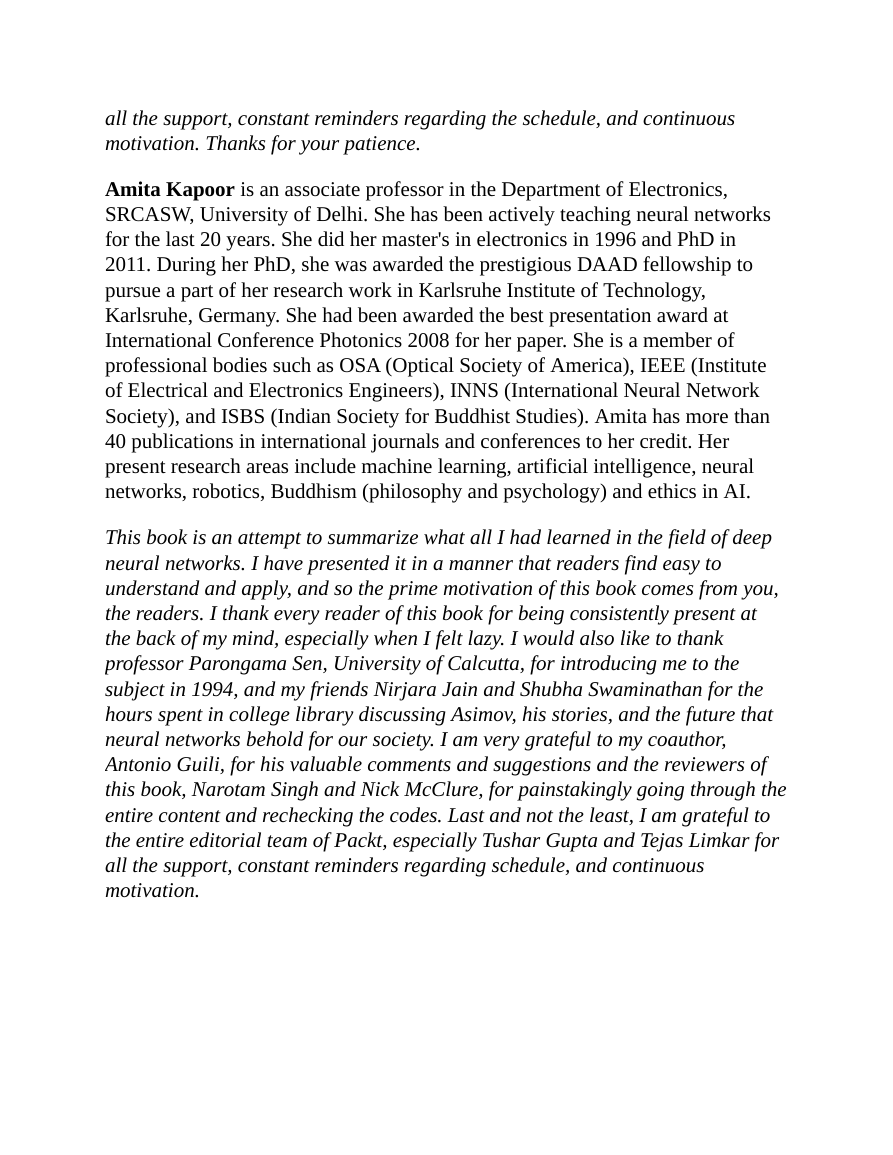








 2023年江西萍乡中考道德与法治真题及答案.doc
2023年江西萍乡中考道德与法治真题及答案.doc 2012年重庆南川中考生物真题及答案.doc
2012年重庆南川中考生物真题及答案.doc 2013年江西师范大学地理学综合及文艺理论基础考研真题.doc
2013年江西师范大学地理学综合及文艺理论基础考研真题.doc 2020年四川甘孜小升初语文真题及答案I卷.doc
2020年四川甘孜小升初语文真题及答案I卷.doc 2020年注册岩土工程师专业基础考试真题及答案.doc
2020年注册岩土工程师专业基础考试真题及答案.doc 2023-2024学年福建省厦门市九年级上学期数学月考试题及答案.doc
2023-2024学年福建省厦门市九年级上学期数学月考试题及答案.doc 2021-2022学年辽宁省沈阳市大东区九年级上学期语文期末试题及答案.doc
2021-2022学年辽宁省沈阳市大东区九年级上学期语文期末试题及答案.doc 2022-2023学年北京东城区初三第一学期物理期末试卷及答案.doc
2022-2023学年北京东城区初三第一学期物理期末试卷及答案.doc 2018上半年江西教师资格初中地理学科知识与教学能力真题及答案.doc
2018上半年江西教师资格初中地理学科知识与教学能力真题及答案.doc 2012年河北国家公务员申论考试真题及答案-省级.doc
2012年河北国家公务员申论考试真题及答案-省级.doc 2020-2021学年江苏省扬州市江都区邵樊片九年级上学期数学第一次质量检测试题及答案.doc
2020-2021学年江苏省扬州市江都区邵樊片九年级上学期数学第一次质量检测试题及答案.doc 2022下半年黑龙江教师资格证中学综合素质真题及答案.doc
2022下半年黑龙江教师资格证中学综合素质真题及答案.doc